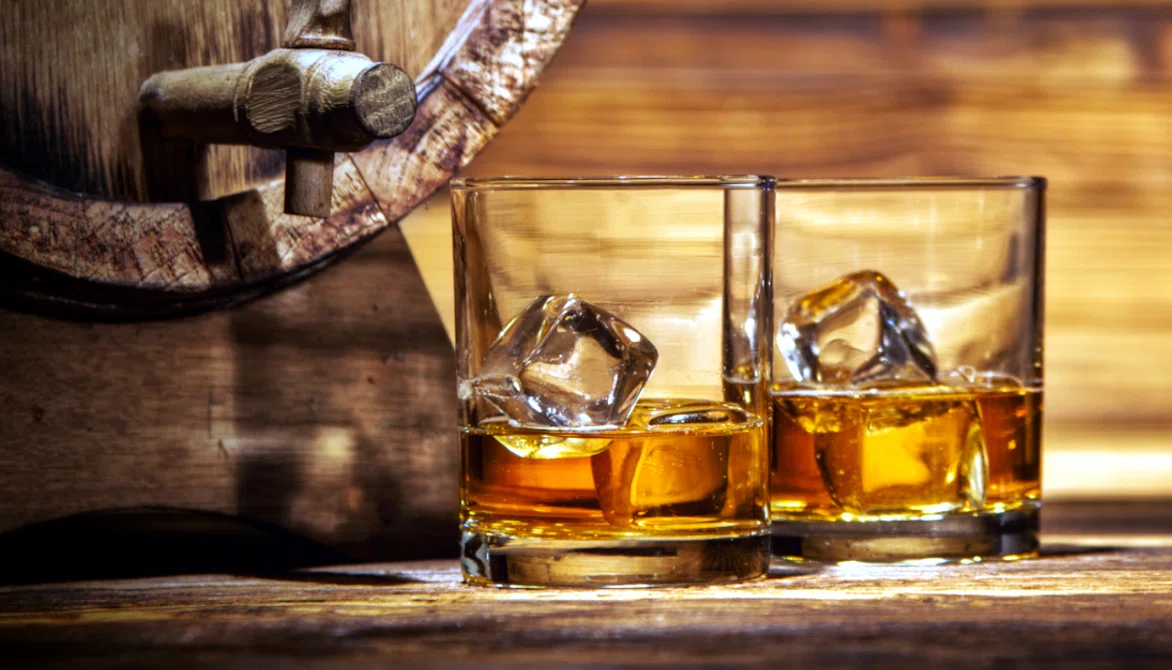Everything You Need to Know About Canadian Whisky

What Makes Whisky Canadian?
What Makes Whisky Canadian?
All Canadian whiskies must be aged a minimum of 3 years in 700 liter or smaller wooden barrels. It must have a 40% ABV, must be made of a cereal grain, and must be made in Canada. Compare that to Scotch whisky regulations and you’ll be amazed at how much room Canadians have to stretch their whisky-making muscles.
Another important aspect of Canadian whisky is that it can contain 9.09% or less of a coloring, flavoring, or other spirit as long as this addition has been aged for at least 2 years.
This 9.09% rule has been the cause of many debates throughout the years. While other countries claim that this blending of spirits makes Canadian whisky cheap and distasteful, modern whisky drinkers are realizing that this is what makes Canadian whisky so special.
By blending in other spirits, Canadian distillers can experiment with all kinds of flavors, making Canadian whisky the most unique type of whisky on the market. Adding in wine, bourbon, rum, or sherry, among other things, is what gives some Canadian whisky flavors that you can’t find elsewhere.
Canadian whisky is known by whisky connoisseurs to be rich in flavor combinations. Hints of vanilla, cinnamon, nut, and fruit are all frequent guests in a bottle of the stuff.
A Brief History of Canadian Whisky
A Brief History of Canadian Whisky
When Canadians first started making whisky in the 1830s, they used wheat. Eventually, Dutch and German immigrants began including rye in their whisky. Rye whisky became so popular that people started asking for the rye-made whisky especially. Thus, Canadian whisky is often simply referred to ‘rye,’ even if it doesn’t actually contain any rye grains.
By this time, Canada was exporting whisky to the US. However, the US taxed Canadian whisky very highly, and only lowered the taxes if Canadian whisky contained 9.09% American spirits. Today, exported Canadian whisky does not have to contain American spirits, but the 9.09% idea stuck -- as mentioned above.
Almost all Canadian whisky sales suffered because of Prohibition in 1920, as much of their income was from the US. To make any profit at all, whisky had to be sold at incredibly cheap prices. One company, however, used Prohibition to their advantage and skyrocketed their sales -- Bronfman’s Distillers Corporation.
By supplying the American bootleg whisky market, Bronfman was not only able to grow his company, but gave American’s a taste for Canadian whisky, too.
Fast forward to today and Canadian whisky makes up some of the most popular whisky in America. In 2018, more than half of all whisky sales in the US were made by Canadian whisky brands.
Yet, for some reason, Canadian whisky is not held up on the same pedestal as other types of whisky.
Canadian Whisky Today
Canadian Whisky Today
A 20 year old Scotch whisky can easily sell for over $200, while you can find a just-as-good Canadian whisky sold for half of that. When you consider that Canadian whisky is often the most original, creative whisky in the world, its inexpensive price tags are shocking.
In the US, it is widely believed that single malt whiskies, made from only one type of grain, are better than blended whiskies. This encourages a lack of support for Canadian whisky, as they are often blended. Yet, many American whiskies are blended too, and they aren’t faced with the same kind of prejudice.
Despite that lacking-in-logic claim against Canadian whisky, recent whisky culture is becoming much more open to it. At the World Whiskies Awards, held every year, there is a specific category for Canadian whiskies, called ‘Canadian Blended.’ This allows for Canada’s whiskies to be put in the spotlight at least one day every year.
Plus, the Canadian Whisky Awards helps to spread the passion for Canadian whiskies and even contributed to the growth of the whisky culture in British Columbia.
As times are changing and whisky becomes increasingly popular, there is more toleration for new flavors and spirit blends. But, we can’t see into the future. Will Canadian whisky get the recognition it deserves, or will simpler, American blended and single malt whiskies steal the show?
Only time will tell.
SEE ALL BLOG ARTICLES
FIND SELECT CLUB WHISKY NEAR YOU
FIND SELECT CLUB WHISKY NEAR YOU


